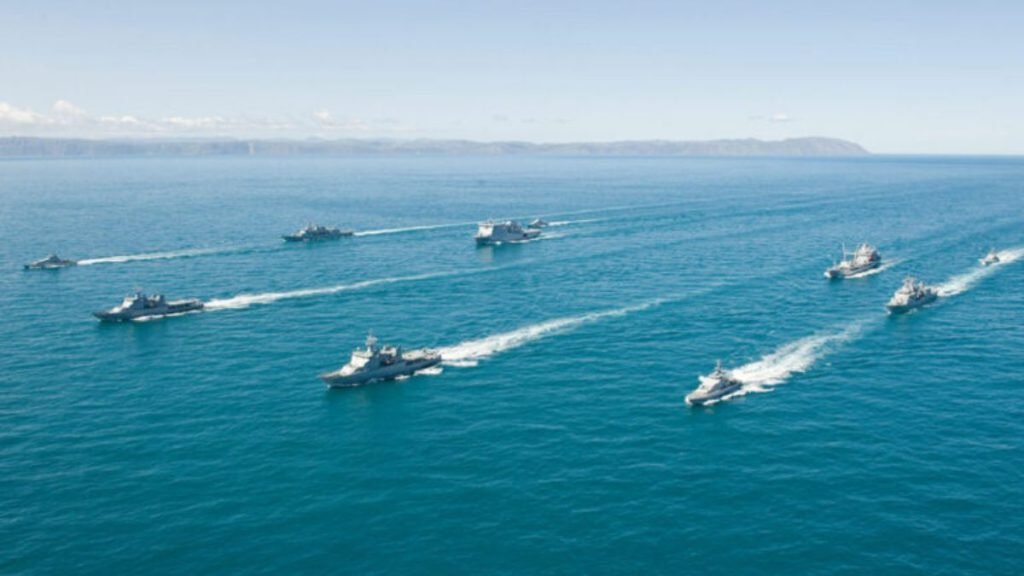The South China Sea (“West Philippine Sea”) has been a potential source of conflict between several countries for many years due to the overlap of their EEZs and China’s claim over a large part of this oceanic space, which extends far beyond its UN-endorsed EEZ. The Spratly Islets and Shoal are simply largely uninhabited coral reefs, but they are surrounded by rich fishing grounds and large petroleum and natural gas reserves. Additionally, the region is one of the busiest sea routes for commercial shipping in the world.
Chinese interventions and military buildup have continued despite a legal victory for the Philippines at the Permanent Court of Arbitration in The Hague.
West Philippine Sea Or South China Sea? FAQs
Q. Is the West Philippine Sea the same as the South China Sea?
A. NO. The South China Sea is semi-enclosed in the western Pacific Ocean. It is to the south of China, west of the Philippines, east of Vietnam, and north of Malaysia, Brunei, Singapore, and Indonesia.
The “West Philippine Sea” refers to the maritime areas located on the western side of the Philippine archipelago. It comprises the Luzon Sea, the waters surrounding, within and adjacent to the Kalayaan Island Group (KIG) and Bajo de Masinloc.
The South China Sea is an important shipping route, a rich fishing ground, home to a coral reef ecosystem with high biodiversity and possibly important oil and gas reserves. The southern part of the South China Sea is also home to the Spratly Islands, a collection of small islands and coral reefs located just above or below the water and forming the peaks of underwater mountains that rise from the depths of the ocean.
The Spratly Islands, long known primarily as a shipping hazard and designated as a “danger zone” on nautical charts, are the site of long-running territorial disputes between some of the littoral States of the South China Sea.
Q. How Did the Philippines Affirm The Arbitral Award?
The Philippines views the July 12, 2016, arbitral award on the South China Sea as an important contribution to international law and the interpretation and application of the United Nations Convention on the Law of the Sea (UNCLOS). The arbitration award finally clarified the issue of historical rights and maritime claims in the South China Sea. Claims of historic rights or other sovereign rights or jurisdictions beyond the geographical and material limits of maritime rights granted by the UNCLOS Law of the Sea have no legal effect.
A. On the occasion of the sixth anniversary of the award in the South China Sea arbitration, Secretary Manalo issued a statement demonstrating the Philippines’ confirmation of the award and declaring it, together with UNCLOS, the anchors of the Philippines’ policies and actions in the West Philippines Sea.
The Philippines has taken a firm stand against illegal and aggressive actions in the West Philippine Sea. The Department has taken and will continue to take the necessary diplomatic actions against activities that violate our sovereignty, sovereign rights, and jurisdiction in our maritime domain.
The Philippines has taken a tough stance against illegal and aggressive actions in the West Philippine Sea.
Q. What Did The Philippines Achieve With The 2016 SCS Arbitration?
A. The 2016 SCS Arbitration decided that the claim of historical rights to resources in marine areas located within the “nine-dash line” has no legal basis and has no legal effect. It affirmed the sovereign rights and jurisdiction of the Philippines in its exclusive economic zone.
Certain actions carried out in the Philippine EEZ were affirmed as violating the sovereign rights of the Philippines and were therefore illegal; whereas large-scale land reclamation and construction of artificial islands have caused serious environmental damage in violation of international conventions; that large-scale harvesting of endangered marine species was damaging marine ecosystems; and that the measures adopted since the beginning of the arbitration had aggravated the disputes.
Q. Does China’s ownership of maritime areas in the South China Sea give it maritime rights, Territorial Sea and EEZ around areas it occupies?
No, as indicated in the arbitration award, the “nine-dash line” has no legal basis or legal effect. China’s claims to historical rights, sovereign rights or jurisdiction in the nine-dash line areas violate the UNCLOS and have no legal effect to the extent they exceed China’s geographical and substantive limits under the UNCLOS. Consequently, the features that China possesses beyond its geographical and substantive boundaries under the UNCLOS and that lie within the PH maritime entitlements and continental shelf are not entitled to the territorial sea and EEZ.
Furthermore, the award made it clear that none of the maritime features in question could be considered “islands” with full maritime rights. They are either low-tide or high-tide elevations.
In the case of low tides, even if China has occupied one of these zones and built artificial islands there, it cannot claim a territorial sea, EEZ or CS entitlements. More importantly, China cannot take advantage of any of these low-tide elevations even if it occupies them.
Concerning high-tide features, the award concluded that it does not give rise to EEZ or continental shelf (CS) entitlements. Therefore, any features claimed by China that overlap with PH entitlements do not generate any EEZ or CS entitlement.
FOLLOW US ON X: CLICK HERE
